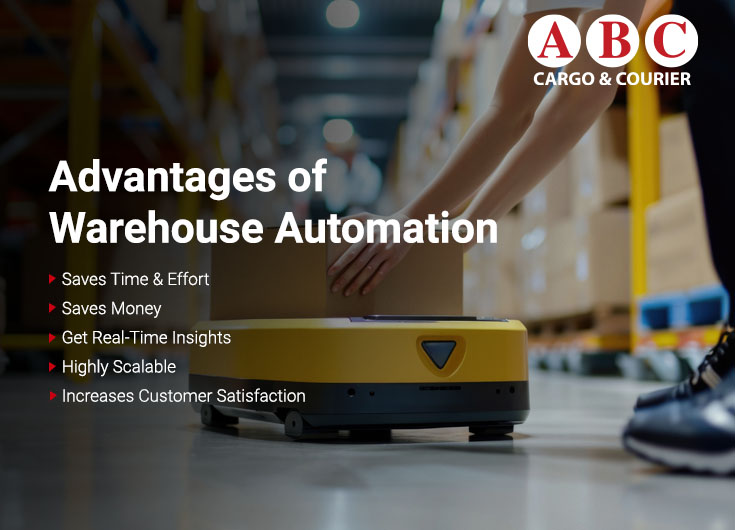What are warehouses? Do you think they are simple storage spaces?
You might be surprised to hear that warehouses are much more than that. They are in fact the most crucial cogs in the supply chain. However, warehouse space is currently at a premium. Hence, optimizing the space available is more important than ever. Moreover, there is a need to correctly track the goods stored and move them efficiently.
So how can you do all these things at the least expense?
The answer lies in the technological advancements that is currently sweeping the logistics industry. Let’s analyze this.
Technology in Warehouses
Warehouse operations were once handled manually. This meant that a lot of labor was expended and errors and delays were common. But things are different today. Technology has reshaped warehouse operations. For instance, ABC Cargo UK uses real-time tracking systems in the warehouses to monitor stock levels and shipments. Thus goods are always accounted for and misplaced items are not common. Whether it’s handling international cargo UK shipments or optimizing local deliveries, technology keeps everything on track.
There are many other technologies that are reshaping warehouse management. We will introduce you to the major ones.
Major Technologies Transforming Warehousing
- Warehouse Management Systems (WMS)
A Warehouse Management System (WMS) can automate a number of mundane, repetitive tasks. Processes like receiving goods, storing goods, picking, and packing orders can all be automated through a WMS. It will also track your inventory.
When an order comes in, a WMS checks if the item is in stock. Then it locates the item in the warehouse. This saves time and ensures accurate order fulfillment.
- Internet of Things (IoT)
IoT devices can exchange data over the internet. In modern warehouses, these devices are becoming prevalent. Equipped with sensors and other software, these devices can accomplish a lot. They can track temperature, humidity, and equipment performance.
- Robotics and Automation
Robots are now actively used in warehouses. You might have seen them moving goods and picking orders. In some warehouses, there are also robots that assist in packing. All these Automated Guided Vehicles (AGVs) and robotic arms work alongside humans to improve efficiency.
This level of automation can speed up warehouse operations. This is especially helpful for companies that offer speedy delivery like cargo express UK services.
- Artificial Intelligence (AI) and Machine Learning
AI is all the new rage today. AI is transforming multiple industries. Things are no different in logistics. For example, in many cargo companies, AI helps adjust cargo UK rates after analyzing demand patterns. In a larger sense, AI-driven tools and machine learning can:
- Forecast demand
- Optimize inventory
- Analyze large amounts of historical data
- Predict future trends
- Optimize storage
Advantages of Warehouse Automation
Automation is a cornerstone of modern warehousing. The following are the advantages of warehouse automation:
- Saves Time & Effort
Repetitive and mundane tasks take up time. Moreover, it requires a lot of labor. But automated systems can take over these tasks. This will free up your workforce, save time, and even reduce errors. For example, automated sorting systems can handle shipments much faster than manual sorting.
- Saves Money
As we just mentioned automation can reduce labor. This can lead to cost savings. Automation will also optimize resource utilization. All this will convert into significant cost savings.
- Get Real-Time Insights
Automated systems can analyze vast amounts of data. Moreover, they can work in real time to track various things. For example, these systems can provide real-time data on inventory levels, order status, and equipment performance. In ABC Cargo’s warehouses, this is especially helpful for cargo UK tracking.
- Highly Scalable
Warehouse automation can be implemented in a scale that suits your business. As your business keeps growing the system can grow with you. Whether you’re handling a local shipments or managing large-scale cargo to UAE from the UK, automated systems can adapt to you needs.
- Increases Customer Satisfaction
Customer satisfaction can make or break your business. Your customers can be your most loyal ambassadors if you make them happy. In logistics, customer satisfaction is all about fast deliveries, safe transport, and good customer service. Automation can help in all these areas. It can speed up the entire order fulfillment process, ensure safe handling, and enhance communication. This is will drive up customer satisfaction and businesses will be rewarded.
FAQ
- What does a Warehouse Management System do?
The functions of a warehouse management system include:
- Optimizing warehouse space utilization.
- Providing real-time visibility and control of inventory levels.
- Automating mundane tasks like inventory replenishment, cycle counting, and order processing.
- Demand forecasting and inventory planning.
- When do you need a warehouse management system and why?
Inventory management and order fulfilment can get complicated as your business grows. This is when you need a WMS to optimize operations. There are a few reason why you would need a warehouse management system:
- It can easily handle higher order volumes
- It optimizes warehouse space
- It cuts labor costs
- It eliminates errors
- It gives you real time insights
- It prevents overstocking and understocking
- It can help maintain accurate records
- It can help meet regulatory compliance requirements
- It enhances customer satisfaction
- What are the benefits of a warehouse management system?
The following are the benefits of a warehouse management system (WMS):
- Automated inventory tracking
- Faster order processing
- Real-time visibility into inventory
- Warehouse space optimization
- Reduced labor costs
- Eliminates errors
- Easy to scale your business as it grows
- Better customer satisfaction
Conclusion
Technology has made warehouse management a lot simpler. What was once complicated and arduous has now become simpler. From Warehouse Management Systems to AI and robotics, these automations will continue to make things easier. They will lead to time savings, cost cuts, and transparency. So, embrace this revolution and grow with it.





